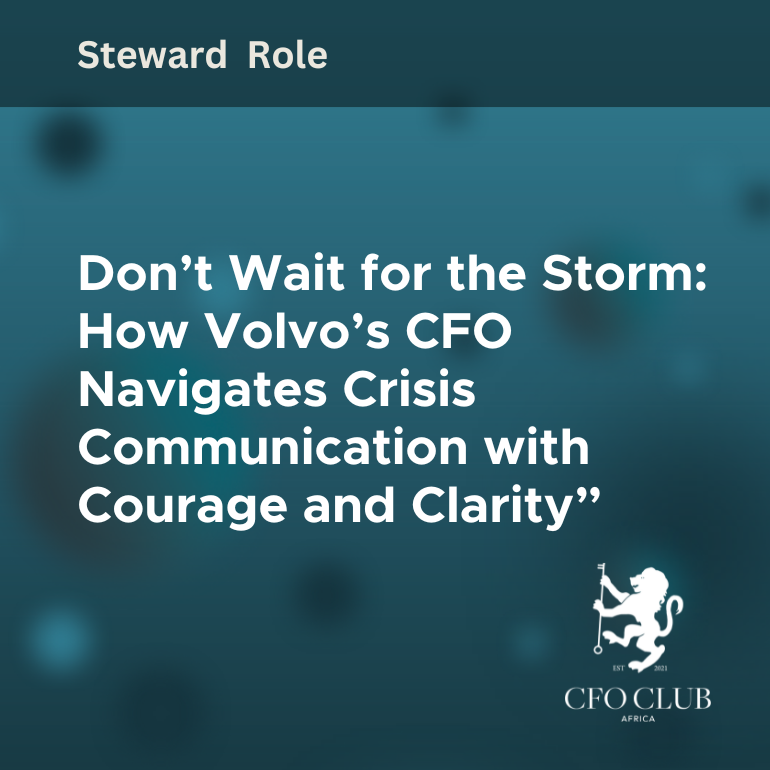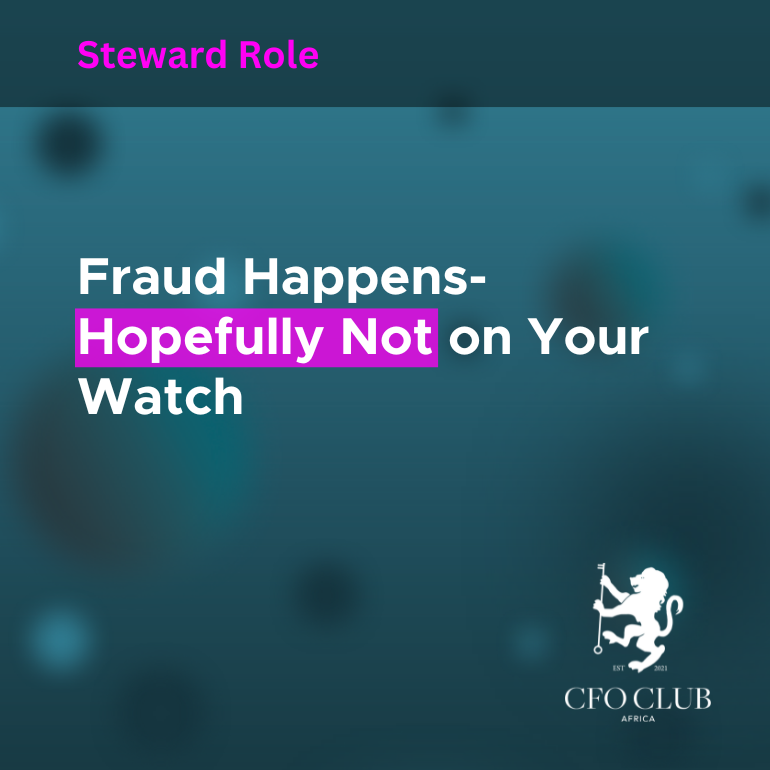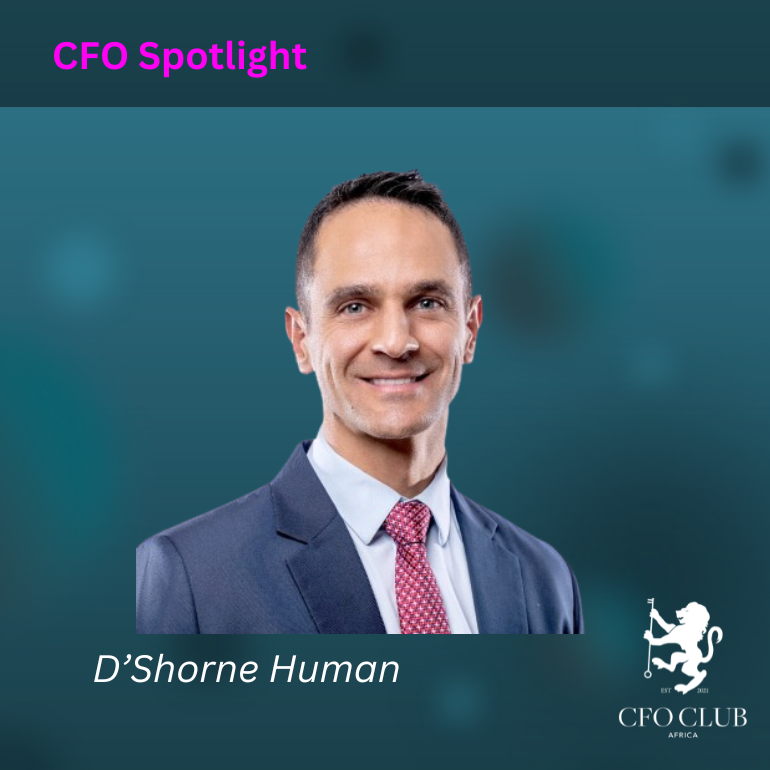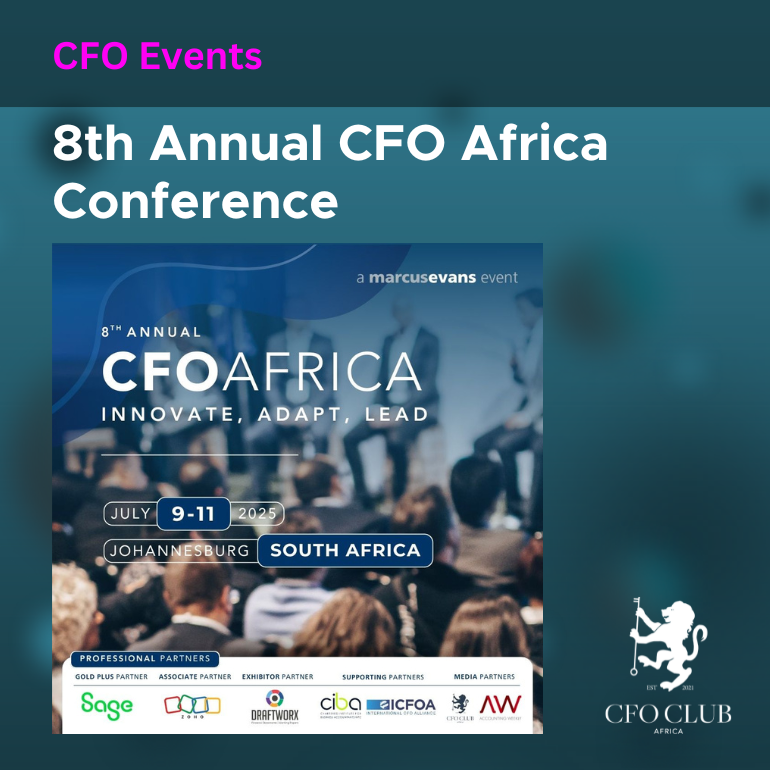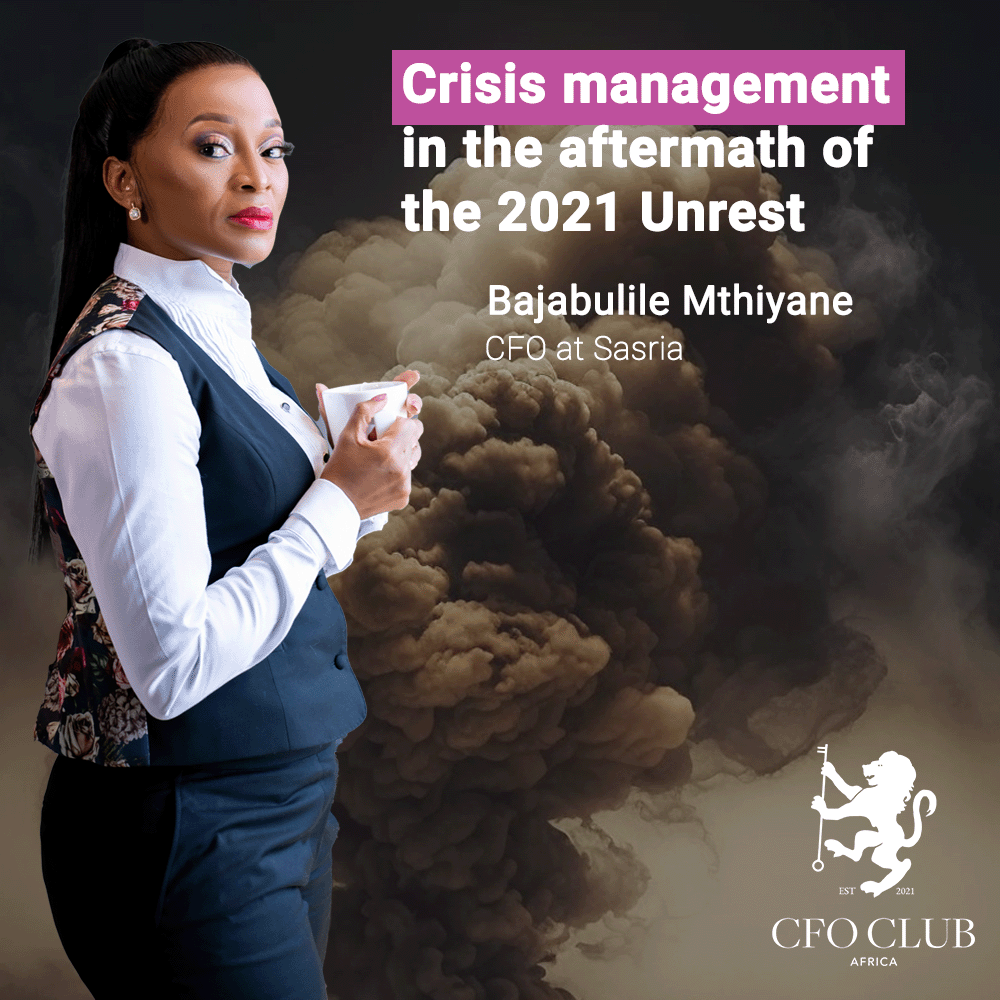Don’t Wait for the Storm: How Volvo’s CFO Navigates Crisis Communication with Courage and Clarity”
Don’t Wait for the Storm: How Volvo’s CFO Navigates Crisis Communication with Courage and Clarity”
In business as in life, storms are inevitable. But the companies that weather them best are those that prepare long before the clouds gather.
Marishka Govender, Chief Financial Officer of Volvo Cars South Africa, offered a powerful reminder of this truth during an insightful conversation about crisis communication, sharing her hard-won lessons from navigating one of the toughest challenges in her career: a major business restructuring under intense public scrutiny.
Here’s what leaders at all levels can learn from her experience.
Step One: Decide Who Steers the Ship
“Everyone needs to know their role and there can’t be two captains at the wheel,” says Marishka.
When a crisis strikes, confusion at the top quickly turns into chaos below. Decide beforehand who will lead communication: the CEO? The CFO? The Head of Communications? Or a coordinated team?
Once chosen, empower that person or team with a clear process for approving messages, and arm them with pre-approved templates for likely scenarios (cyberattacks, product delays, workplace disruptions).
And don’t forget your channels. Internal emails, press briefings, social media all have their place, but each requires discipline and alignment.
“Silence breeds speculation. Conflicting messages breed mistrust. One steady voice builds confidence.”
Step Two: Tailor Your Message to Your Audience
This is where many organisations falter. In a crisis, everyone wants answers but they don’t all care about the same things.
- Investors want to know how their money is protected and what the financial roadmap looks like.
- Employees need reassurance that their jobs and safety are secure.
- Customers worry about whether they’ll still get the product or service they paid for.
- Regulators and partners want evidence that commitments and compliance standards are intact.
Marishka points to Apple’s handling of supply chain disruptions during the pandemic. Investors got earnings guidance and production forecasts, customers got transparent product updates, and all stakeholders heard one consistent brand voice.
“One brand, many narratives all aligned,” she summarised.
At Volvo, the lesson was learned painfully. When the company decided to shrink its dealer network from 19 to just 7 as part of its sustainability strategy, media and social platforms erupted. For weeks, headlines speculated that Volvo was abandoning South Africa.
Volvo countered podcasts, interviews, articles, and a relentless drumbeat of social media messaging. “We’re here to stay,” became the mantra repeated by leadership, dealers, and employees alike, until it finally stuck.
Step Three: Stay Flexible and Own Mistakes
No plan survives contact with reality. Crises evolve. Sentiment shifts. Facts change. And you must be willing to adapt.
Monitor social media, press, and internal chatter in real time. If your initial message misses the mark admit it, correct it, and move on.
“People respect honesty more than perfection,” Marishka explains.
One Volvo example illustrates this beautifully:
“We issued a statement we thought was clear but it backfired. Social media tore it apart. So, we reworded, clarified, and kept talking. Eventually, the noise settled. But it only happened because we stayed engaged.”
Step Four: Build Trust Before You Need It
Perhaps Marishka’s most profound advice is also the simplest: don’t wait for a crisis to engage. Relationships forged during calm seas are your safety net when the waves hit.
Regular check-ins with stakeholders not just about problems but about progress, vision, and shared wins foster trust and loyalty.
Some practical tips she shared:
- Hold regular coffee sessions or town halls with employees, even informally.
- Actively solicit feedback and act on it.
- Be approachable and transparent, even when the news isn’t perfect.
- Deliver on promises, credibility is cumulative.
A Human Lesson Beyond Business
What makes Marishka’s perspective so relatable is that she draws parallels between corporate and personal life.
“Even in our personal lives with partners, kids, friends if something goes wrong, we have to communicate. It’s an everyday skill we all practice, whether we realise it or not.”
Indeed, effective communication is less about polished statements and more about authenticity, responsiveness, and care.
The Takeaway: Communication Is Leadership
Marishka’s experience at Volvo Cars shows that crisis communication is not just about managing risk it’s about demonstrating leadership when it matters most.
The companies that emerge stronger from crises aren’t lucky they’re prepared. They speak with one voice, listen deeply to their audiences, adapt to shifting realities, and cultivate trust long before trouble comes.
So, don’t wait for the storm. Start now. Build your relationships. Prepare your playbook. And when the wind rises, you’ll find your company and your people far more resilient than you imagined.

